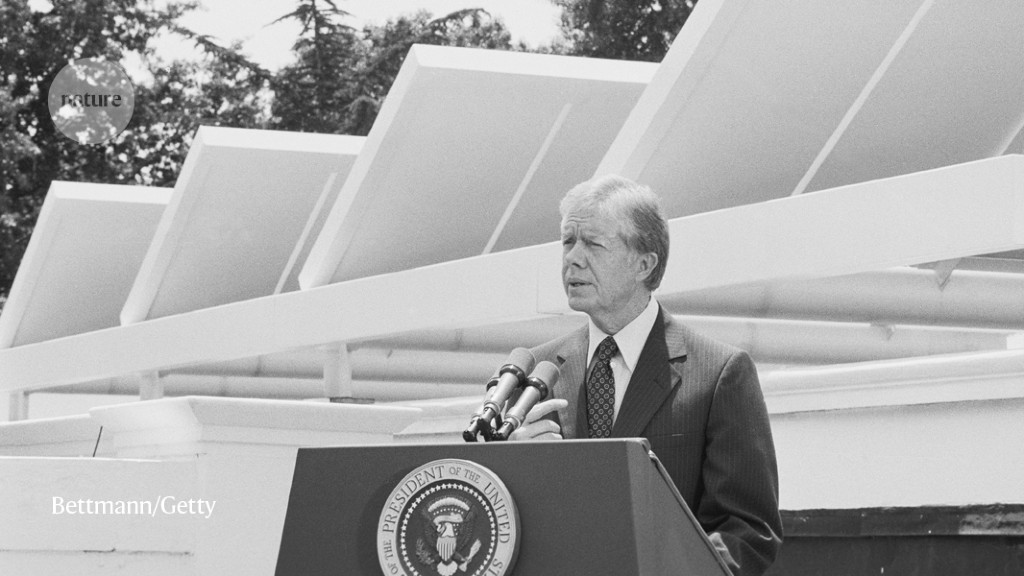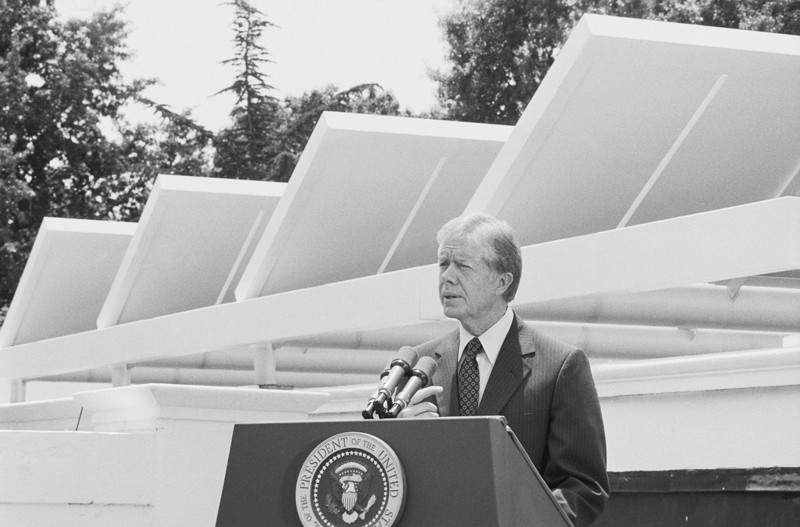Fire and Flood: A People’s History of Climate Change, from 1979 to the Present Eugene Linden Penguin (2022)
Russia’s violent invasion of Ukraine has sent shock waves through the world’s energy markets, causing oil prices to swing wildly and nations to redraw allegiances over gas supplies. The war could drive the world towards a more decarbonized economy — or further entrench dependence on fossil fuels.
Given the global nature of the current events, it seems an odd time to explore a US-centric perspective on the failure to confront climate change. But journalist Eugene Linden’s Fire and Flood could hold lessons for the energy emergency. Although the book veers at times into parochialism in its US focus, it reminds us of the many forces that have held society back from developing effective solutions to the climate crisis. It describes missed opportunities in the past and highlights strategies, particularly in business and finance, for the future.
Having covered environmental affairs for Time magazine for many years, Linden is efficient at summarizing scientific knowledge. His tale begins in 1979, when meteorologist Jule Charney chaired a US National Academy of Sciences committee that explored the effects of carbon dioxide on the climate. The background is well known: in the 1850s, with the industrial revolution under way, scientists such as Eunice Newton Foote and John Tyndall observed that CO2 gas heated up faster than air did. In the 1890s, physical chemist Svante Arrhenius calculated how extra CO2 could warm the planet. By the 1950s, the oceanographer Roger Revelle was tracking how much human-produced CO2 must be going into the atmosphere and Charles David Keeling was beginning his iconic measurements of CO2 levels above Mauna Loa, Hawaii.
By 1979, Charney and his colleagues were well aware that humanity was pouring CO2 into the atmosphere, with potentially huge societal consequences. Linden introduces a useful framework for thinking about what came next: four clocks. The first tracks climate change in real time; the clock’s hands advance with every climate-driven storm, drought, flood and other extreme event. Each of the three other clocks lags behind the first at different speeds. One represents research, which tries to explain climate change as quickly as possible but is slowed by the pace of investigation and publication. Another is public awareness, which lags behind discovery. The final clock, the slowest, is the business world.
Linden steps through the years after 1979 in terms of opportunities missed. In the 1980s, the business clock was set back in the United States, when president Ronald Reagan slashed federal support for developing renewable energies, especially solar power. The country ceded technological leadership in these fields to Germany, Japan and others. Meanwhile, fossil-fuel companies such as Exxon began developing their highly effective tactics in the United States for delaying action to curb emissions, by sowing doubt about the facts of global warming. The public-awareness clock slowed.
In the 1990s, the scientific clock was doing pretty well. Researchers extracted long cores of ice from the Greenland ice sheet, solidifying their understanding of how abruptly the climate has changed in the past. Sadly society did not keep pace. After the collapse of the Soviet Union in 1991, the former Soviet states missed the opportunity to decarbonize rapidly. Emerging nations, too, failed to leapfrog dirty energy supplies and go straight to cleaner sources of power. China began its coal-fuelled rise.
This era, which lasted into the 2000s, was also the heyday of climate denialism, particularly in the United States and Australia, where the rhetoric of individual freedom and battling regulation has deep roots. Doubt-merchants fuelled fights over the ‘hockey stick’ graph (showing an abrupt rise in temperatures over time) and whether global warming had ‘stalled’ after the powerful 1997–98 El Niño event, and they stoked the 2009 Climategate scandal over scientists’ internal discussions. The public-awareness clock fell further behind.
Linden aims a fire hose of cynicism at international policymakers. He derides many reports by the Intergovernmental Panel on Climate Change as timid, and the United Nations agreements to limit greenhouse-gas emissions as toothless. His greatest ire, however, is directed at businesses that mortgaged a liveable future for today’s profits. Researchers proposed integrated tools for reducing carbon emissions, such as the 2000s concept of ‘stabilization wedges’: multiple strategies across transport, heating and so on, to collectively reduce emissions. Yet even insurance companies — which, more than any other business, should want to eliminate the risk of climate change sooner rather than later — failed to adequately incorporate such strategies.
Throughout the 2000s and 2010s, as global temperatures rose and extreme weather events became more common, insurance companies continued to underwrite policies in the communities most at risk. Here are the fires and the floods of the title, many affecting the most vulnerable communities. Urban heat, exacerbated by climate change, hits hardest along racial and ethnic lines. Sea-level rise drowns not only beach homes of the affluent but also poorer neighbourhoods with little coastal protection. Like so many areas of environmental justice, the impacts of climate change ultimately come down to issues of inequity.
In this, Linden falls well short of other recent histories such as Alice Bell’s Our Biggest Experiment (2021), which explores the intersection of race, class and climate in a much more sophisticated fashion. Linden’s subtitle of a ‘people’s history’ is odd: there are very few in his narrative who are not scientists, politicians and business leaders. He spends little time exploring how to address the outsized climate impacts on, for instance, low-lying island nations that will soon be submerged by sea-level rise or Indigenous peoples living in the fast-warming Arctic.
Linden argues that extreme weather events, such as prolonged droughts in Australia and hurricanes in the Caribbean and North America, are now so pronounced and obvious that they might force political change when previous discussions could not. Yet the path forward is not so clear. The clocks of public awareness and of business interests, especially, continue to lag behind the reality of what’s transpiring.
The outlook becomes even more bleak towards the end. Linden concludes that the global response to COVID-19 shows that the world is ill-equipped to deal with any complex, far-reaching problem. Tribalism, autocracy and misinformation are on the rise, and even the promise of jobs in a decarbonized economy is not enough to trump those forces. Will the collapsing Russian economy drive many nations back to a reliance on fossil fuels, or will the fuel shock caused by Russia’s invasion of Ukraine accelerate the transition to renewable energies?
That, like so many other things in these uncertain times, remains to be seen.
Competing Interests
The author declares no competing interests.




More News
Daily briefing: Carrion crows have counting skills seen only in people
Researcher parents are paying a high price for conference travel — here’s how to fix it
Asymmetric hydrogenation of ketimines with minimally different alkyl groups – Nature